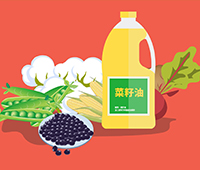据了解,这种食品酶是由非转基因曲霉属菌株FUA生产的,旨在用于3种食品生产过程。
经过评估,专家小组认为,在预期的使用条件下,不能排除饮食暴露引起过敏反应的风险。根据所提供的数据,评估小组得出结论,这种食品酶在预期使用条件下不会引起安全问题。部分原文报道如下:
The food enzyme α-amylase (4-α-d-glucan glucanohydrolase; EC 3.2.1.1) is produced with the non-genetically modified Aspergillus sp. strain FUA by DSM Food Specialties B.V. The food enzyme is free from viable cells of the production organism. The food enzyme is intended to be used in four food manufacturing processes. Since residual amounts of food enzyme-total organic solids (TOS) are removed in the production of distilled alcohol, dietary exposure was calculated only for the remaining three food manufacturing processes. It was estimated to be up to 0.687 mg TOS/kg body weight (bw) per day in European populations. Genotoxicity tests did not indicate a safety concern. The systemic toxicity was assessed by means of a repeated dose 90-day oral toxicity study in rats. The Panel identified a no observed adverse effect level of 2000 mg TOS/kg bw per day, the highest dose tested, which when compared with the estimated dietary exposure, results in a margin of exposure of at least 2911. A search for the homology of the amino acid sequence of the food enzyme to known allergens was made and three matches with respiratory allergens were found, one of which is also an oral allergen. Known sources of allergens were used in the food enzyme manufacturing process. The Panel considered that the risk of allergic reactions upon dietary exposure cannot be excluded, but the likelihood is low. based on the data provided, the Panel concluded that this food enzyme does not give rise to safety concerns, under the intended conditions of use.
本文由华体会体育大厅
食品资讯中心编辑,有任何疑问,请联系news@foodmate.net。







